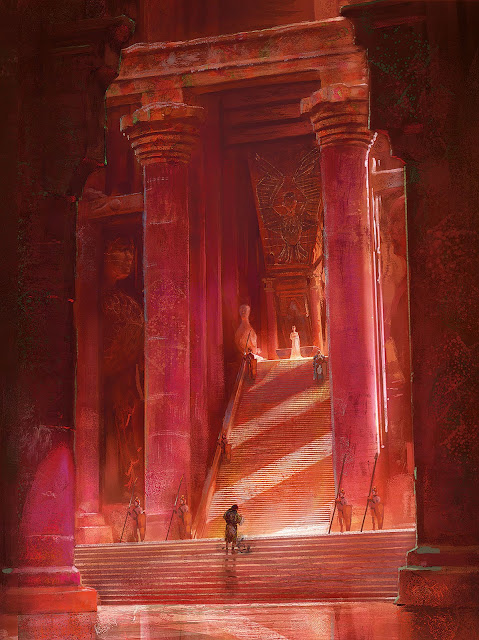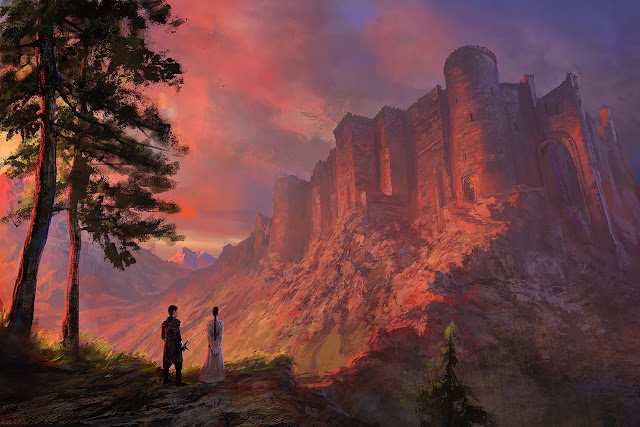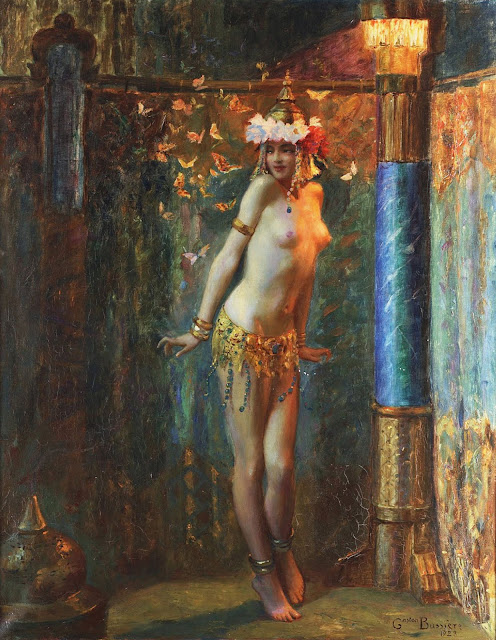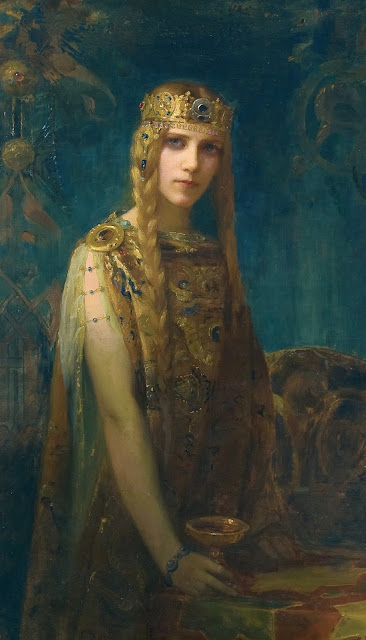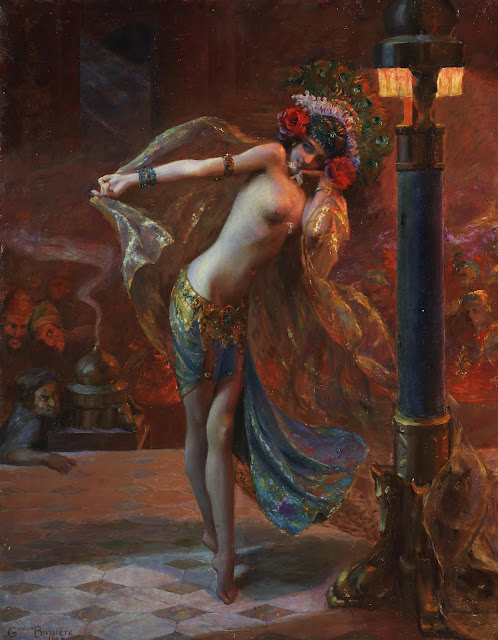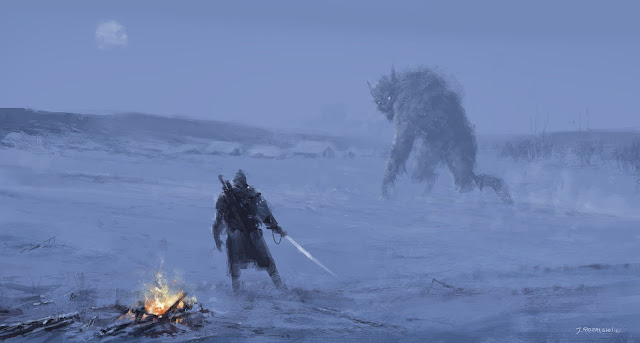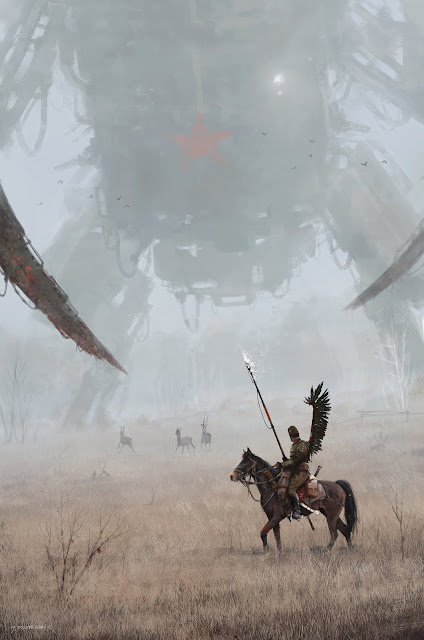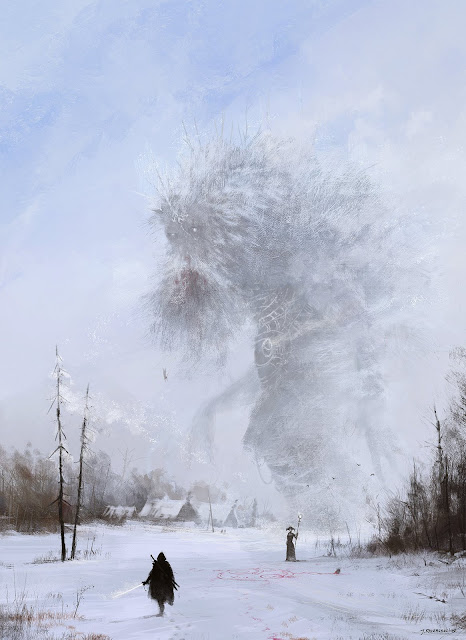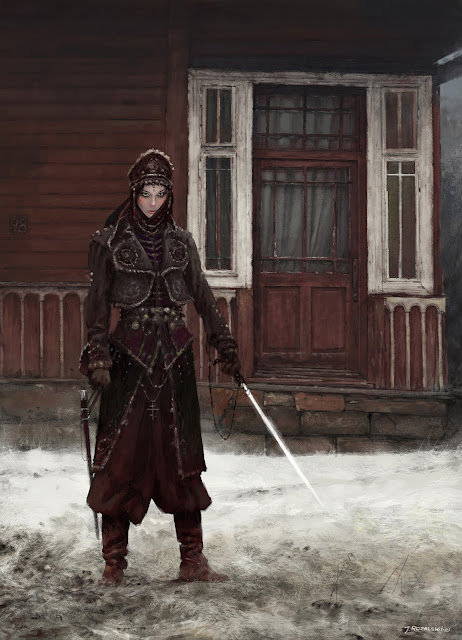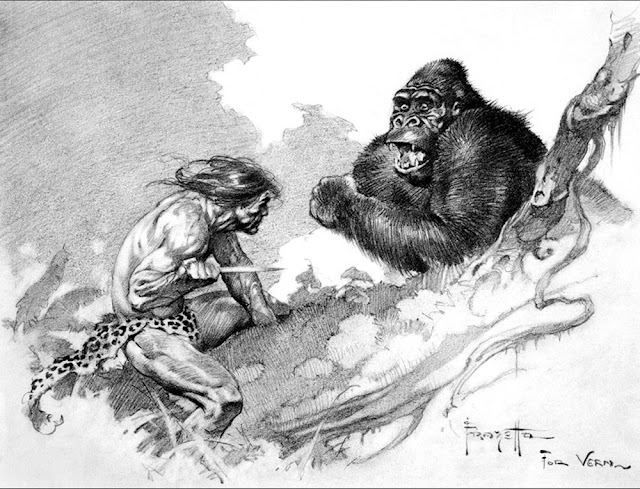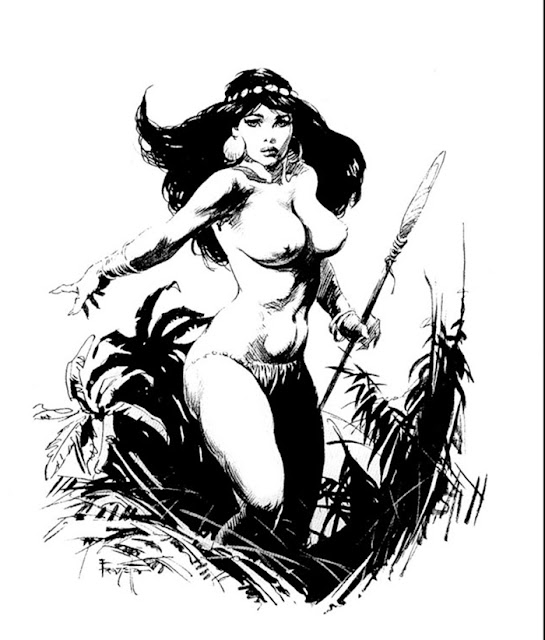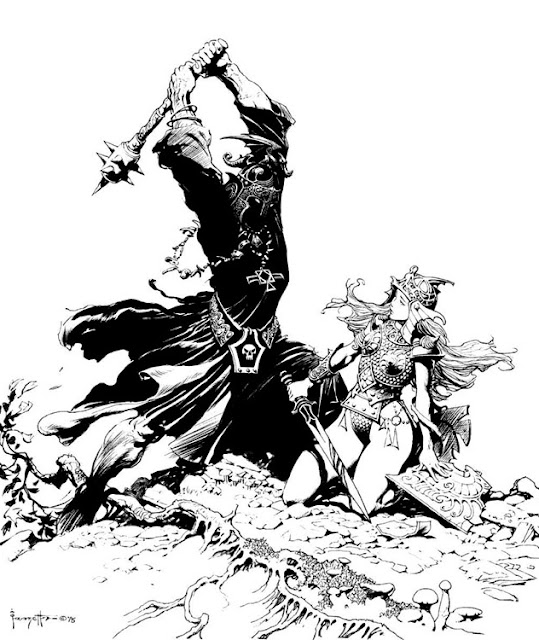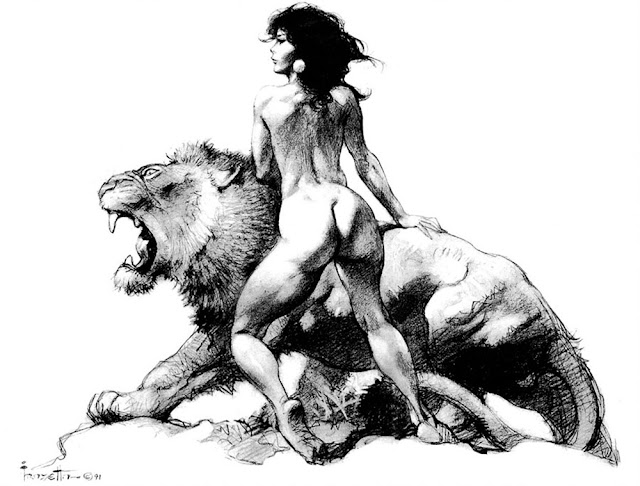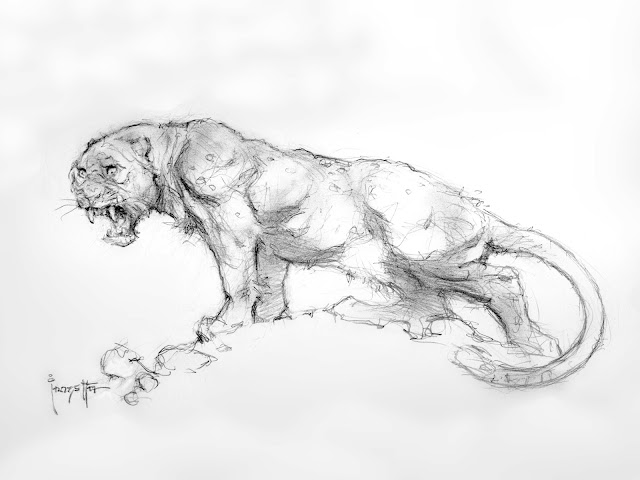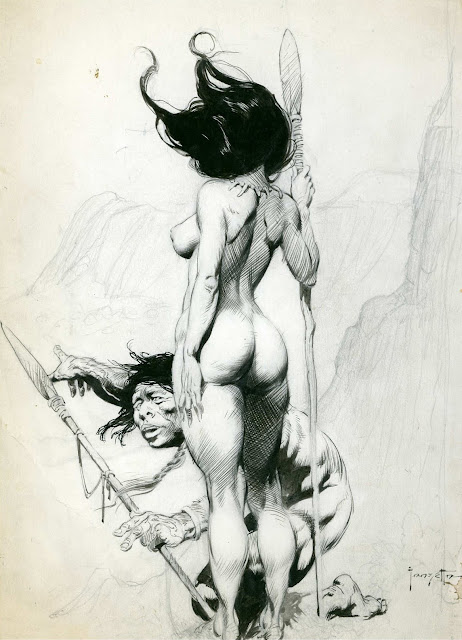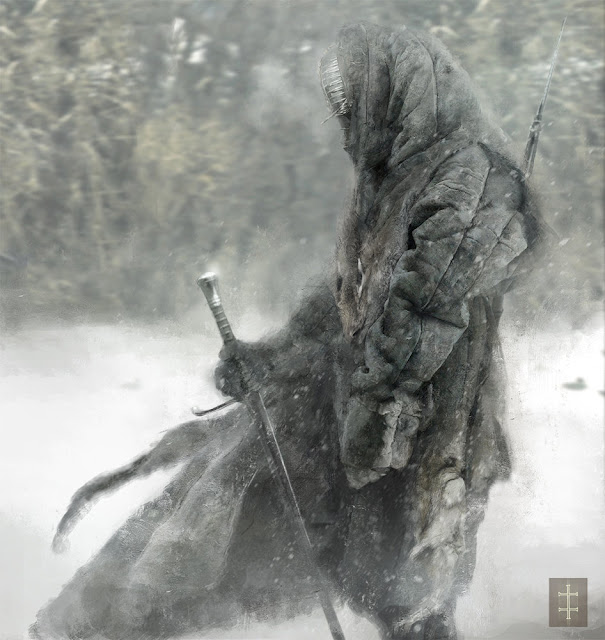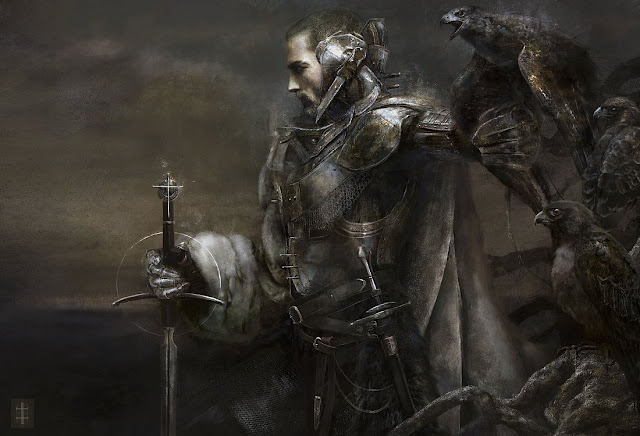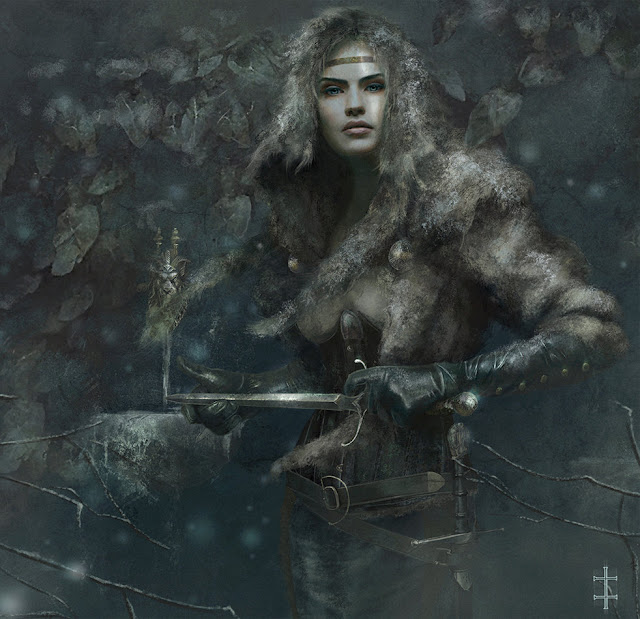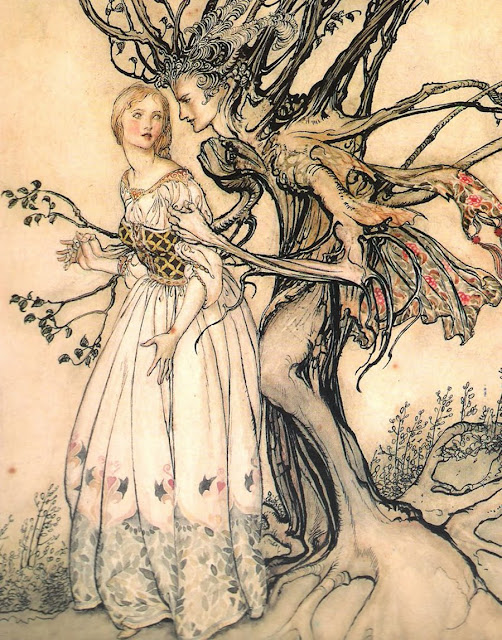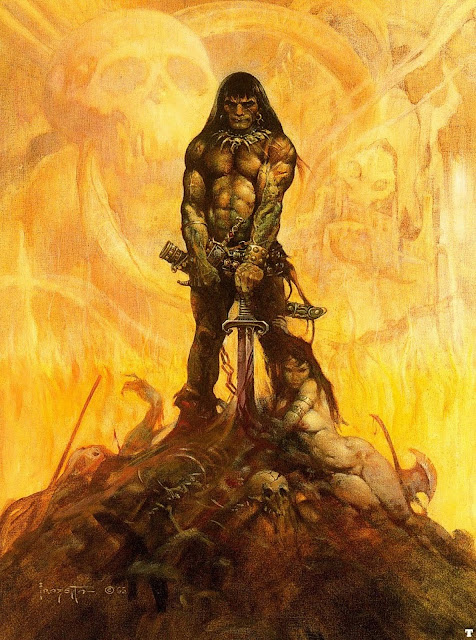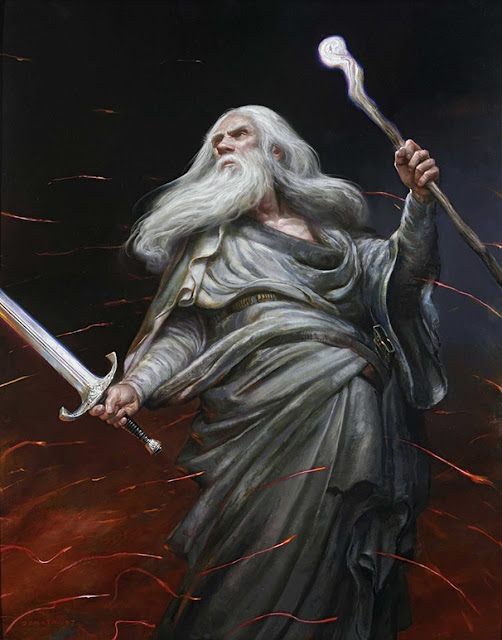You can find more of Marc Simonetti's profile here
Thursday, December 29, 2016
Concept Art Spotlight: Marc Simonetti
Marc Simonetti is one of the better known SFF illustrators creating today. A prolific artist who has done work for fantasy stalwarts like George R.R. Martin and Terry Pratchett, Simonetti might be considered something of a transitional figure in the realm of SFF illustration. Though elements of his style harken back to gentler fantasy illustrators like Darrell K. Sweet and the Brothers Hildebrandt, Simonetti primarily works digitally, employing software to paint his compositions. The result is an excellent blend of old school color and CG scale. His Song of Ice and Fire illustrations, for example, definitely reveal the influence of classic 1970s book covers, yet he broadens the scope of those classic tropes by fixing his characters in larger fantasyscapes associated with contemporary concept art. Though his Iron Throne is certainly his most famous illustration, Simonetti is the "brush" responsible for a lot popular fantasy images that pop up on sites like Pinterest, Tumblr, and Facebook (though he is not always credited). Here are some of his most inspiring pieces.
Tuesday, December 27, 2016
Looking Backwards: The Illustration of Gaston Bussiere
Never before have classic illustrators had so many eyes on their work. Over the last two decades, the internet has breathed second life into thousands of illustrations once consigned to the library. Beyond occasional coffee table books, most people had spotty and limited access to vintage illustration. The vast visual archive of the internet has provided a whole new gallery free and open to the public. This "revival" isn't just limited to illustrators--a wide variety of nineteenth-century artists are receiving second consideration thanks to the online circulation of their work. Romantic figure painting, generally dismissed by the modernists and ignored by the contemporary art world, has found a whole new audience via Google Image Search. As such, a vital visual contribution to the world of fantasy is being re-explored as "forgotten" illustrators and artists receive fresh attention.
Though the Pre-Raphaelites have experienced a resurgence in popularity over the last two decades, the same can't be said for many of their symbolist counterparts. While artists like John William Waterhouse and Dante Gabrielle Rosetti dominate Pinterest boards and "classic art" tumblrs, the symbolists have been somewhat left out of the internet's rediscovery and celebration of once shunned Romantic painters. One of these largely forgotten romantics is Gaston Bussiere. Though close with symbolist giants like Gustave Moreau and much in demand during his lifetime, Bussiere's work has been surprisingly neglected given the renaissance of interest in turn of the century illustration. Considering the recent attention given to illustrators like Arthur Rackham, Warwick Goble, and Edmund Dulac, it seems a bit odd that Bussiere remains generally unknown.
Had Bussiere been a minor figure working on the outskirts of the mainstream, his obscurity would be more understandable. Yet, the artist was one of the most regarded and sought after French illustrators during a rich period in French illumination. Bussiere illustrated works for major figures like Berlioz, Balzac, Flaubert, Gautier and Oscar Wilde. It would seem that these associations alone would have secured his place in the annals of illustration, yet most of the designers I spoke to, many of them history buffs who enjoy mining the past for inspiration, were completely unfamiliar with Bussiere's work (as I was myself before beginning work on this post).
To explore the work of Bussiere is to explore a world of lush colors and sumptuous light. Like Moreau, Bussiere's paintings are awash in organic hues, yet Bussiere's colors are even more vibrant, almost Blakean in their exuberance. Like Waterhouse, Bussiere had a fondness for painting nymphs and dryads. Lithe figures can be found lounging and playing alongside the water. Like many of his contemporaries, Bussiere was drawn to classic young heroines and "femme fatales" like Joan of Arc and Salome. Though most of his themes are drawn from classic literature, Bussiere's Wagner illustrations are some of his most "fantasy" centric pieces. Here are a handful of some of the artist's paintings.
Though the Pre-Raphaelites have experienced a resurgence in popularity over the last two decades, the same can't be said for many of their symbolist counterparts. While artists like John William Waterhouse and Dante Gabrielle Rosetti dominate Pinterest boards and "classic art" tumblrs, the symbolists have been somewhat left out of the internet's rediscovery and celebration of once shunned Romantic painters. One of these largely forgotten romantics is Gaston Bussiere. Though close with symbolist giants like Gustave Moreau and much in demand during his lifetime, Bussiere's work has been surprisingly neglected given the renaissance of interest in turn of the century illustration. Considering the recent attention given to illustrators like Arthur Rackham, Warwick Goble, and Edmund Dulac, it seems a bit odd that Bussiere remains generally unknown.
Had Bussiere been a minor figure working on the outskirts of the mainstream, his obscurity would be more understandable. Yet, the artist was one of the most regarded and sought after French illustrators during a rich period in French illumination. Bussiere illustrated works for major figures like Berlioz, Balzac, Flaubert, Gautier and Oscar Wilde. It would seem that these associations alone would have secured his place in the annals of illustration, yet most of the designers I spoke to, many of them history buffs who enjoy mining the past for inspiration, were completely unfamiliar with Bussiere's work (as I was myself before beginning work on this post).
To explore the work of Bussiere is to explore a world of lush colors and sumptuous light. Like Moreau, Bussiere's paintings are awash in organic hues, yet Bussiere's colors are even more vibrant, almost Blakean in their exuberance. Like Waterhouse, Bussiere had a fondness for painting nymphs and dryads. Lithe figures can be found lounging and playing alongside the water. Like many of his contemporaries, Bussiere was drawn to classic young heroines and "femme fatales" like Joan of Arc and Salome. Though most of his themes are drawn from classic literature, Bussiere's Wagner illustrations are some of his most "fantasy" centric pieces. Here are a handful of some of the artist's paintings.
Wednesday, December 21, 2016
Concept Art Spotlight: Jakup Rozalski
In general, fantasy concept art tends to favor a kind of quasi-realism, an ultra-polished digital gleam that lends itself to video games and CG powered film. At its very best, this quest for hyper detail can produce some stunning artwork (see last week's Concept Art Spotlight devoted to portrait artist Eve Ventrue). Yet at it's very worst, digital concept art often looks like, well, digital concept art. That is to say, less like art and more like a collection of shiny character models and oversaturated matte landscapes.
That's why it's so refreshing to encounter an artist like Jakub Rozalski whose pieces lean more toward impressionism than realism. While Rozalski is often a contributing artist supplying work for larger projects, much of his stuff feels more like quality illustration than toss away concept art. Each piece seems to tell its own story, and you'd be hard pressed to find an artist whose work conveys more narrative power. Though he works digitally, his painterly style adds a certain cloudy ambience to each piece that suggests a greater world beyond. Jakub is especially good at using fog and haze to capture the menace of beasts on the prowl.
Wednesday, December 14, 2016
Sketch Work: the drawings of Frank Frazetta
While Frank Frazetta is generally regarded for his painting, he was also a skilled draftsman in both pencil and ink. Though Frazetta would likely fail a classical figure drawing class, his engagement with the human form continues to impress. His bodies twist and flail and leap off the page. While his proportions defy realistic anatomy, they manage to convey a level of energy and motion virtually unmatched in the realm sci-fi/fantasy art. There is a reason that Frazetta remains one of the most imitated artists within both the comic book and book cover community, unlike some of his more rigid contemporaries (Boris Vallejo please stand up), Frank's bodies never seem flat or awkwardly posed but seem to emanate tension from head to toe. Even at his most rudimentary, Frazetta's sketches exhibit the power and raw savagery contained within his paintings.
Monday, December 12, 2016
Concept Art Spotlight: Eve Ventrue
Eve Ventrue is one of the most exciting concept artist to appear in awhile. Working primarily in portraits, Ventrue achieves some of the most photorealistic character art you'll find on the web. While there is a lot of great detailed character work being produced for sci-fi projects, there isn't nearly as much going on in the realm of medieval fantasy. Thankfully, Ventrue is working to change that with her gorgeous portfolio of knights, squires, mages and warriors. What's just as refreshing is Ventrue's commitment to practical armor and wardrobe realism. Her characters are not only beautiful, they are consistently believable. Helmets, breastplates, grieves and swords all carry real weight, and clothing drapes and flows realistically. Even at this early stage in her career, she has established an engaging style all her own, and her pieces are instantly recognizable. This is fantasy realism at its best. We're definitely looking forward to more from this talented concept artist.
Sunday, December 11, 2016
Fantasy Illustration and the Vision of Arthur Rackham
The turn of the twentieth century is generally considered the golden age of European illustration. Not only did publishers finally have the technology and capital to create special edition pressings, but there was a wide audience hungry for more detailed color illustrations. Artists like Warwick Goble and Edmund Dulac provided work for popular texts like Arabian Nights, The Water Babies, and the collected works of Shakespeare. Rich in detail and exploding with vibrancy, these illustrations were a far cry from the woodcut and ink depictions that had commonly illustrated texts since the early sixteenth century.
Arthur Rackham is often considered the greatest of these early nineteenth-century watercolor illustrators, both for his immense skill and his sheer range of work. Born in Lewisham, Kent in 1867, Rackham would dedicate his focus to illustration, and by his mid-twenties he was illustrating whole texts. In 1893, he illustrated Thomas Rhodes' The Other Side and would soon go on to complete illustrations for Gulliver's Travels, The Ingoldsby Legends, and the fairytales of the Brother's Grimm.
Rackham is renowned for his "washing technique" in which soft outlines would slowly be worked to greater detail through the steady application of ink and watercolor washes. This approach added a translucency and etherial quality to Rackham's illustrations uncommon for the period. While artists like Gobles and Dulac were no doubt expert technicians, Rackham's work provided a level of unmatched detail and vibrancy. One is often struck at just how "modern" Rackham's work appears.



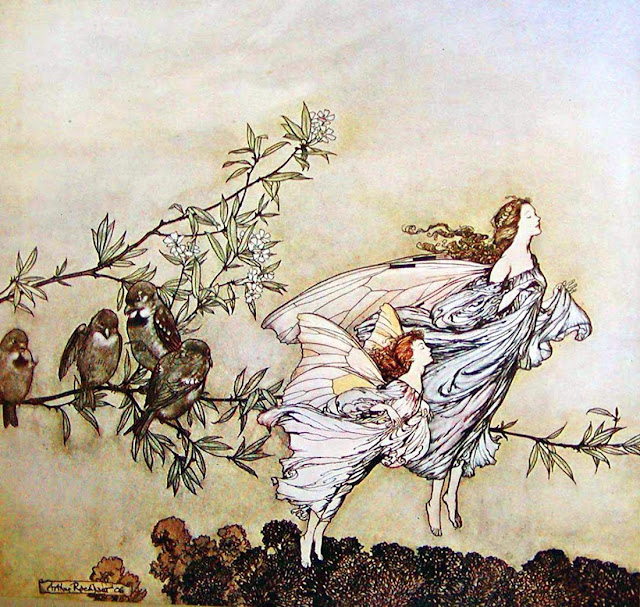



Arthur Rackham is often considered the greatest of these early nineteenth-century watercolor illustrators, both for his immense skill and his sheer range of work. Born in Lewisham, Kent in 1867, Rackham would dedicate his focus to illustration, and by his mid-twenties he was illustrating whole texts. In 1893, he illustrated Thomas Rhodes' The Other Side and would soon go on to complete illustrations for Gulliver's Travels, The Ingoldsby Legends, and the fairytales of the Brother's Grimm.
Rackham is renowned for his "washing technique" in which soft outlines would slowly be worked to greater detail through the steady application of ink and watercolor washes. This approach added a translucency and etherial quality to Rackham's illustrations uncommon for the period. While artists like Gobles and Dulac were no doubt expert technicians, Rackham's work provided a level of unmatched detail and vibrancy. One is often struck at just how "modern" Rackham's work appears.
Though Rackham is most famous for his Alice in Wonderland illustrations, his work throughout the broader realm of fantasy is extensive. Both his mermaid and fairy compositions remain some of the most astounding ever committed, testifying not only to Rackham's immense skill with pen and brush, but also his astonishing scope of imagination.







Saturday, December 10, 2016
The Fantasy World of Donato Giancola
With the passing of both Frank Frazetta and Jeffrey Catherine Jones in the last several years, fantasy art not only lost two of its most prolific luminaries, but also lost two of its most technically skilled painters. Thankfully, there are talented artists like Donato Giancola to fill the void. Depending on your thoughts on Boris Vallejo (and there are plenty of thoughts), Giancola might be considered the best traditional painter currently working in the fantasy realist tradition (Donato calls himself a "classical-abstract-realist").
One of the critical distinctions that separates Giancola from his fantasy predecessors is a deeper commitment to the classical tradition. While Jones found inspiration in the abstract schools of early modernism (namely expressionism and symbolism), and Frank Frazetta followed his own "hyper-realist" muse, Giancola draws a good deal of inspiration from the so-called "old masters." The artist has cited painters like Rembrandt, Titian and Caravaggio as some of his favorites, and this affinity clearly shows through in his work. Figure predominates, and the play of light and perspective grip the eye to the face and limbs.
Consider one of Giancola's many Lord of the Rings illustrations such as this dramatic piece featuring Frodo, Golem and Sam. One can easily see the influence of Caravaggio on this composition, especially in regards to the position of faces and the detailed straining of the hands to convey weight and struggle. Or consider the shipwreck piece below, likewise with its heavy classical emphasis on hands and faces.
Beyond his commitment to classical technique, Giancola is a master of composition. I think it's fair to suggest that despite its wild and rich thematic pallet, fantasy art often has a tendency towards a certain myopia of composition. Characters are either presented towering above or cowering before the action. Admittedly, this "towering/cowering" trope is a beloved staple of sci fi/fantasy art, from the the original Star Wars posters to the iconic book covers of Frank Frazetta, emphasizing the prowess or peril of major characters is a way to sell copy.
Another famous example of the classic "towering" trope provided by Frank Frazetta
One of the critical distinctions that separates Giancola from his fantasy predecessors is a deeper commitment to the classical tradition. While Jones found inspiration in the abstract schools of early modernism (namely expressionism and symbolism), and Frank Frazetta followed his own "hyper-realist" muse, Giancola draws a good deal of inspiration from the so-called "old masters." The artist has cited painters like Rembrandt, Titian and Caravaggio as some of his favorites, and this affinity clearly shows through in his work. Figure predominates, and the play of light and perspective grip the eye to the face and limbs.
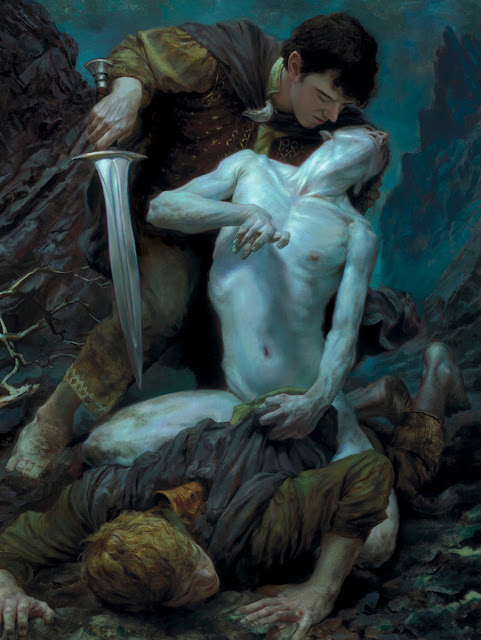 |
 |
Beyond his commitment to classical technique, Giancola is a master of composition. I think it's fair to suggest that despite its wild and rich thematic pallet, fantasy art often has a tendency towards a certain myopia of composition. Characters are either presented towering above or cowering before the action. Admittedly, this "towering/cowering" trope is a beloved staple of sci fi/fantasy art, from the the original Star Wars posters to the iconic book covers of Frank Frazetta, emphasizing the prowess or peril of major characters is a way to sell copy.
 |
| The "towering" effect in Tom Jung's original Star Wars: A New Hope poster |
Another famous example of the classic "towering" trope provided by Frank Frazetta
"Cowering" trope provided by Giancola himself
 |
| St. George and the Dragon by Donato Giancola |
While Giancola has himself employed such a compositional approach, he generally favors a far more active and counterintuitive presentation of the action.
The Golden Rose (2007) is one of Giancola's best known pieces, and beautifully captures his use of classical figures. The scene depicts a young woman grieving at the sight of a shipwreck as two butchered mermen lay dead upon the beach. The painting is a striking fantasy take on the classic pieta composition and highlights Giancola's trademark illumination of skin and flesh tones.
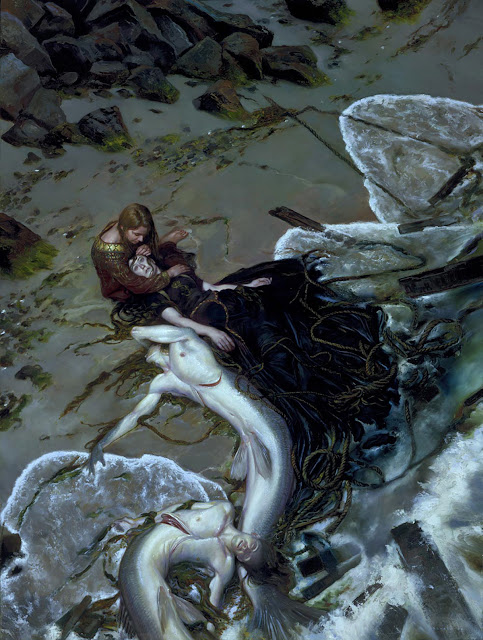 |
| The Golden Rose by Donato Giancola |
The Golden Rose (2007) is one of Giancola's best known pieces, and beautifully captures his use of classical figures. The scene depicts a young woman grieving at the sight of a shipwreck as two butchered mermen lay dead upon the beach. The painting is a striking fantasy take on the classic pieta composition and highlights Giancola's trademark illumination of skin and flesh tones.
Further cementing Donato's place as one of the premier contemporary fantasy artist is his illustrative bonafides. Giancola has provided some of the best illustrations for both Tolkien's Lord of the Rings as well as George R.R. Martin's Song of Ice and Fire.
Song of Ice and Fire
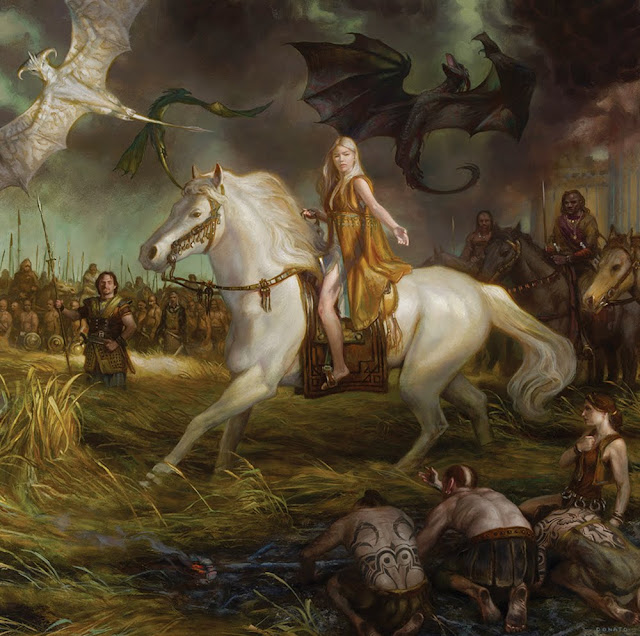 |
| Mother of Dragons by Donato Giancola |
Subscribe to:
Posts (Atom)


